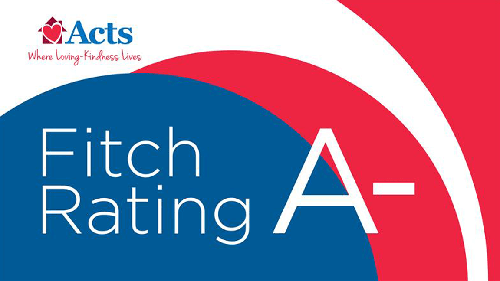Can I Afford a CCRC? Understanding the Typical Costs and Benefits
Continuing Care Retirement Communities, or CCRCs, offer a compelling retirement solution, blending independent living with a comprehensive plan for potential future care needs. Yet, the initial investment can raise a natural question: "Can I afford a CCRC?"
While the upfront costs may seem initially to be significant, CCRCs can provide long-term financial advantages and priceless peace of mind. Let's dive into this question and help you make an informed decision.

Breaking Down Typical CCRC Costs
CCRC costs are generally structured with two primary components:
- Entrance Fee: This is a one-time, upfront fee that varies significantly depending on your chosen community, the size and configuration of your independent living residence, and the type of health services contract you select. Some CCRCs offer partially refundable options while others do not.
- Monthly Fees: These recurring fees cover the day-to-day costs of your residential lifestyle. Included services typically cover the following:
- Housing and amenities
- Meals
- Utilities
- Maintenance
- Transportation
- Activities and social events
- Access to on-site fitness and health facilities

Average Costs of CCRCs: What to Expect
The average entrance fee for CCRCs nationwide varies greatly, typically ranging from $100,000 to $300,000 or more. This cost can be influenced by a number of factors, including the location of the community, the level of amenities offered, the size and style of your chosen living unit (studio apartment, 3-bedroom apartment, villa, etc.), and the type of care contract you select.
For instance, CCRCs in desirable locations with abundant amenities or larger living spaces will generally have higher entrance fees. Additionally, some CCRCs offer different contract options that can impact the entrance fee. Type A Life Care contracts, which provide the most comprehensive coverage for future long-term care needs, typically have a higher entrance fee than Fee-For-Service contracts, which may require you to pay additional costs for assisted living or skilled nursing care as needed.
When considering the average monthly fees of CCRCs, which often fall between $2,000 and $4,000 or more, it's important to remember that these fees are all-inclusive and cover a significant portion of your retirement living expenses. This can be particularly advantageous when compared to the potential costs of maintaining a home and paying for individual services like housekeeping, yard work, gym membership, meal preparation, and home fixes like a new water heater. Keep in mind that monthly fees can also vary depending on the factors mentioned above that influence entrance fees.
Important Considerations Beyond the Initial Cost
- Long-Term Cost Protection: One of the key financial benefits of CCRCs is the protection they offer against the unpredictable and potentially skyrocketing future costs of long-term care. Most CCRCs provide a full continuum of care options, including assisted living, memory care, and skilled nursing services, and the Type A contract does this at predictable rates, typically covered in your monthly fees. This ensures that typical CCRC costs are managed effectively, allowing you to budget your retirement accordingly, because your costs will never increase solely because your level of health need does.
- Predictability of Costs: Unlike traditional homeownership, CCRCs provide a predictable budgeting model for your retirement expenses. Monthly fees often include a majority of your routine living expenses, making it easier to plan your financial future.
- Potential Tax Benefits: A portion of your CCRC fees may be tax-deductible as a prepayment of medical expenses. Be sure to consult with a tax advisor or financial planner to understand potential deductions that might apply to you.

How Do CCRCs Compare to Other Retirement Living Options?
To answer the affordability question accurately, you need to compare costs over a projected timeframe. Consider these scenarios:
- Staying in Your Current Home: While there's no upfront cost to staying put, you may face increasingly expensive home maintenance, unpredictable property taxes, the need for paid home health services in the future, and potentially the cost of moving to an assisted living facility and monthly rate at market prices if care needs arise.
- Rental Communities: These typically do not include as many amenities as CCRCs, and they don't offer a continuum of care. Long-term care costs could be significantly out-of-pocket.
Are You a Good Candidate for a CCRC?
Deciding if you can afford a CCRC requires a careful analysis of your financial situation and future goals. CCRCs might be a good fit for you if:
- You are in good health and want to secure a plan for the future.
- You desire a predictable budgeting model for long-term living expenses.
- You value the peace of mind of knowing healthcare is available should the need arise.
- You are looking for a community-focused lifestyle with abundant amenities and social opportunities.
- You and your spouse have different health needs but want to remain together.
Consider Your Options with Acts Retirement-Life Communities
If you think a CCRC might be right for you, Acts is eager to be your partner in this endeavor. We understand that affordability and the average cost of CCRCs is a critical consideration. Explore our 28 communities across the East Coast to learn about our financing options, potential savings strategies, and to receive personalized estimates based on your preferences. Let's work together to assess whether a CCRC aligns with your financial goals and your vision for a fulfilling retirement.





